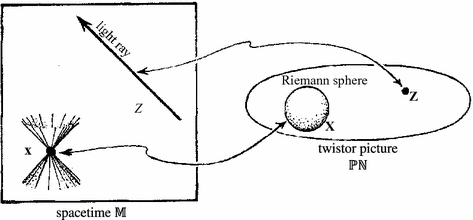Last week a symposium on Nature at the energy frontier was held at the ETH in Zurich, funded by the Latsis foundation. Videos of many of the talks have appeared here.
As part of the symposium, David Gross gave a public talk, available here. Gross is often invited to give such talks, and I’ve either attended or taken a look at the video for quite a few of them. The first substantive posting on this blog back in 2004 was about one such talk. Back then, Gross was claiming that in 3-4 years there would be a headline in the New York Times about the discovery of supersymmetry at the LHC (he was overly optimistic about how long it would take to get the machine working properly). I wondered at the time:
What will be interesting to see will be what Gross et. al. do when this doesn’t happen. Will they drop string theory?
In all of the talks I’ve seen since that time, Gross continued to express optimism, including willingness to bet significant sums of money on a discovery of superpartners at 50/50 odds. His talk at the Latsis symposium included a remarkable change of tone, featuring an Einstein quote I hadn’t seen him use before:
The successful attempt to derive delicate laws of nature, along a purely mental path, by following a belief in the formal unity of the structure of reality, encourages continuation in this speculative direction, the dangers of which everyone vividly must keep in sight who dares follow it.
He describes Einstein as both encouraging the kind of speculative path followed by string theory and SUSY, while at the same time warning of its dangers, and noted that Einstein himself devoted the latter part of his life to a speculative path that turned out to be a dead end.
In his explanation of the standard arguments for string theory and SUSY, Gross was much more cautious than in the past, careful to explain that these arguments were based on just speculative “clues”. These clues might just be coincidences, but the main reason for not giving up on them was that we don’t really have any others.
About the LHC results, Gross described them as having now ruled out the simplest SUSY models, which could be a clue that SUSY does not exist. He said that if SUSY is not seen at the LHC, we will learn for sure that theorists have been on the wrong track for many decades. According to him, this would “change a lot of our way of thinking”, since “we have been pursuing these clues for a long time.” He didn’t discuss how ways of thinking will change, although he is well known to strenuously reject one popular idea about this (anthropics and the multiverse).
Erik Verlinde gave an odd talk with a title that promised to address these issues, String Theory and the Future of Particle Physics. He explained the history of string theory and how the original hope was that it would tell us where the SM parameters came from, something which “looks differently now”. According to him, the idea of strings moving in a compactified 10d was the “old view”, now made obsolete by branes. The “present view” is all about gauge-gravity duality, which doesn’t say anything about those SM parameters. According to him the “future view” of string theory will somehow start from some new basic principles that we don’t know yet, providing an underlying microscopic description that will explain holography, and give an “emergent” explanation of space, time, matter, etc. There was no explanation at all of what these new principles were or what the new microphysical description would be. String theory itself would just be an “effective theory”, like the Standard Model.
After this introduction, Verlinde than moved on to something that seems to have nothing at all to do with string theory, giving a long explanation of how he thinks there are some new degrees of freedom out there that have dynamics at long time scales. These should be treated by the methods of polymer dynamics, and they will explain dark matter and dark energy. He produced lots of graphs of astrophysical data, and claimed that he has an “extension” of Newtonian gravity, better than MOND, which explains the astrophysical data. At the end of the talk there were a bunch of questions about the cosmological implications of this, I couldn’t tell if Verlinde had an answer. He has been talking about this idea in public talks for a couple years now, although as far as I can tell there is no paper. Also, as far as I can tell, no one else besides him takes this seriously.
The last talk of the conference was from Nima Arkani-Hamed, giving basically the same talk I’ve written about recently here and here. I confess to not listening to the whole thing, since it was quite familiar (although I did notice he addressed the question of the possibility there wasn’t really a hierarchy problem, saying people who raised that were “frustrating”, since he had thought about it for decades, and “trust me, there’s a hierarchy problem”). In the question session, he made the same point I often end up arguing with string theory proponents about, saying (1:14) that if “you can do experiments at the string scale, wouldn’t help you at all”. The idea that you would see string excitations on a compactified space he characterizes as a misguided old idea from the 1990s. If there’s a landscape, the possibilities are so complex for Planck scale behavior that you can’t predict what experiments at that scale would see. I’m glad to see that now instead of getting into arguments like this one, I can send people to go argue with Nima.


